#grey kadokawa
Text
unfinished bonkers

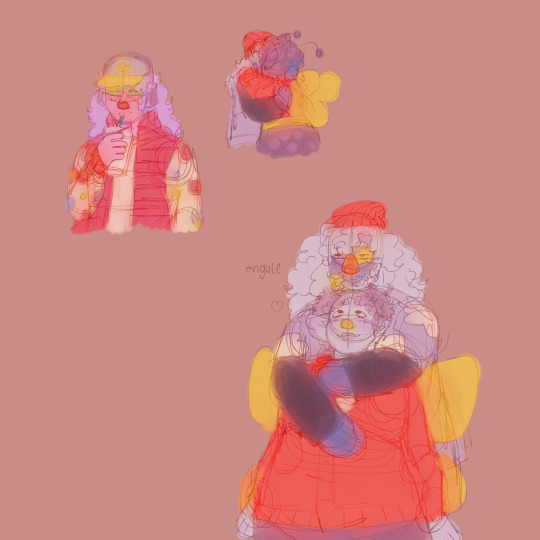
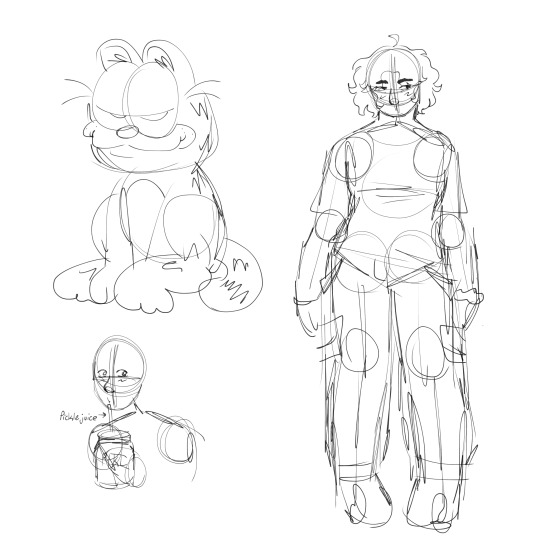
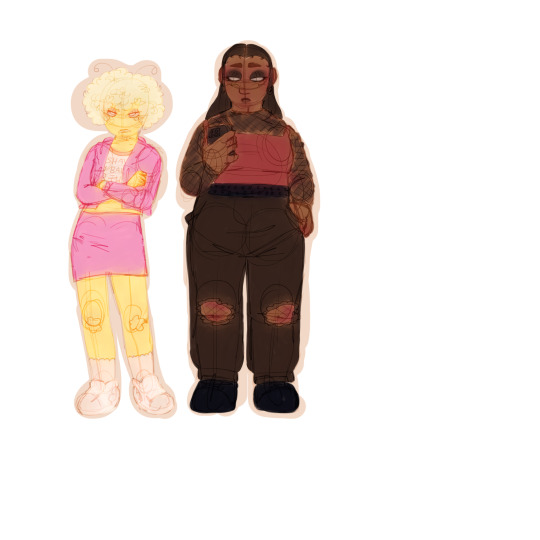


#🐝#went through art block for like four weeks dude#dhmis#my art#shrignold#shrignold dhmis#dhmis shrignold#dhmis fanart#shrignold the butterfly#dhmis art#lars the lamp#lars#dhmis warren#warren the eagle#warren dhmis#garfield#grey kadokawa#oc tag#babette#danielle#unfinished#sketches#november 2023#scopo tw#maybe#25 notes
28 notes
·
View notes
Note
Hi i heard that hitorijime my hero has been droped can you take it ? Please
Fuck no. I’ve never been so happy to not work on a project anymore. Also, the whole grey area of scanlation stuff is already barely defensible, Kadokawa are a big publisher, they’re releasing a volume of Hitorijime every 3 months, and I expect they will be good quality, so... there is no reason we would go anywhere near it, sorry.
I don’t need the trouble with people reporting us and causing us problems for the projects that we are really attached to! Sorry anon, I’m sure you are disappointed, but I think it shouldn’t have been picked up again at all, tbh. It’s too visible and it’s not like it’s a tiny startup publisher that is putting out the English version.
34 notes
·
View notes
Text
So I’m a Spider, So What?, Vol. 8
By Okina Baba and Tsukasa Kiryu. Released in Japan as “Kumo Desu ga, Nani ka?” by Kadokawa Books. Released in North America by Yen On. Translated by Jenny McKeon.
I’ve discussed before that the world that this book takes place in is a really horrible world to live in, but I don’t think any book to date has hammered that home quite like this volume, which shows us again and again the downside of “everyone is morally grey trending towards black”. On the surface, the plot of this book involves Ariel, White (Shiraori is used sparingly here, so I’ll stick with White for now) and company slowly moving towards the demon lands, only to be halted by the presence of an ogre/oni who is terrorizing everyone and everything in their way. White’s narration is seen less than ever before, and flips back and forth with the ogre’s narration, with cameos from Vampy, Potimas and a few humans. Those cameos are important, though, as they remind us that one person’s practical decision is another’s life-breaking horrible tragedy. And the reader may not agree with the practicality.
There’s actually a timeskip involved here: the book takes place two years after the end of the last one. Unfortunately for White, she’s no closer to being able to use any of her powers than she was before – she may be a God now, but in terms of fighting ability she’s as weak as a kitten. In her head, she spends most of the book whining and moaning about it. Of course, in reality she’s as silent as ever. Fortunately, by the end of the book she’s in enough of a life-or-death crisis that she’s able to regain a bit of her powers. This is the light part of the book, as, deadly danger aside, Ariel’s group is a lot of fun, and the danger they’re in never feels too lethal. It’s the slice-of-life camping trip part of the book.
And then there’s the rest of the book. The countryside is being plagued by a series of infants being kidnapped,l and as we’ve read the early books we know exactly who and what is behind that, but here we see how it’s affecting the families who are destroyed, and it’s heartbreaking. Ronandt, who was so much fun as a goofy old man obsessed with our spider, has been demoted as he’s lost all sense of what is harsh training and what is abuse. The adventurers in this book almost all die like dogs, and those that don’t ponder just giving up and going back to their farm. The ogre is a walking ball of rage half the time (we’ve seen him in earlier books as well, but here he’s getting his “official” intro) and the half that he isn’t is depressing and bleak… then horrific and disturbing. Lastly, Buirimas, the man presented throughout the book as a noble warrior who died without ever seeing his wife and infant… is also shown to have done something so mind-numbingly inhumane that I have no words. Again, when you don’t think of others as people, you lose the ability to make correct moral judgments.
So overall this was a good book, but the mood shifts are a pain in the neck, and by the end I was very glad it was coming to a stop. Next time hopefully they’ll hit the demon land, and perhaps another timeskip can put us closer to where we left off with Shun and company? Oh, and Potimas is still the worst. I really hate him.
By: Sean Gaffney
2 notes
·
View notes
Video
youtube
Full look at the opening section of the game including all the intros, terrible voice acting and the best console Diablo clone money can buy. Based on the Table top RPG by Ryo Mizuno, which was later turned into novels before being adapted for both Manga and Anime, published by Kadokawa Shoten. The game itself is designed as a continuation of the story seen in the original 1990 anime series and sees the wise sage Wart with the help of the grey witch Karla, resuscitate the former king of Marmo Beld. In order to stop the return of the goddess of death, destruction and misery Cardice / Kardis (Pending on the translator). The full title of the game is in fact Record of Lodoss War: The Advent of Cardice. However the subtitle was strangely dropped from the European version of the game, it can still be seen briefly in the opening attract intro at the very end, which is odd as the subtitle really explains what the game is all about as it is a completely new entry in the history of Lodoss.
Record of Lodoss War: The Advent of Cardice at first glance is a Diablo clone on console with more open environments, real combat & movement and full 3D graphics. Now you might think it was a Diablo 2 clone, however Advent of Cardice arrived in Japan the same time Diablo 2 was released in North America. In many ways Advent of Cardice is a far better game than Diablo 2 both better looking and sounding with a far more interesting plot and characters. Apart from the lack of multiplayer, Diablo 2 looks a bit pale in comparison and still does.
Advent of Cardice is a huge game, that will take days to finished, packed full of secrets, weapons and armour to unlock. With a fast pace real time combat that controls and handles better than Diablo 1 & 2 as you can move around and evade enemy attacks directly yourself. The game's story was written by series creator Ryo Mizuno and features most of the core characters from the original series the game also includes multiple endings, some of which break with the canon storyline that follow in the later animated series as you can allow key series characters like Parn and Deedlit to die, if you fail to protect them.
Unfortunately Advent of Cardice faced two big problems on release in the west, one is that the Record of Lodoss War ended up being quite an obscure manga and anime in the west. With it not being released in many countries at all, indeed most gamers who picked up the Dreamcast game had no idea of the back story that led up to the game or that there even was one. The other is that the game was published by Crave Entertainment & SWING! Neither were big publishers and who didn't have the budget to market the game correctly. As a result the game wasn't reviewed by that many magazines, nor did it get the fanfare as the game to take down Diablo 2. Instead it just got pushed out on the shelves to sit alongside the much advertised Grandia 2 and its far better looking cover. As a result the game didn't become the huge system selling RPG it should have been and faded into obscurity even to this day. On the plus side you can pick up Lodoss very cheaply for a game this good. Fans of the series will love the game and anyone who liked Diablo will also enjoy this fantastic game. If you own a Dreamcast and like RPGs this should be in your collection.
1 note
·
View note
Text
Top 7 Naked Kantai Collection Anime Pillow You Can Not Miss
Kantai Collection (艦隊これくしょん Kantai Korekushon, lit. "Fleet Collection", subtitled as "Combined Fleet Girls Collection"), abbreviated as KanColle (艦これ KanKore), is a Japanese free-to-play web browser game developed by Kadokawa Games.With the seas under constant threat from the hostile "Abyssal Fleet," a specialized naval base is established to counter them. Rather than standard naval weaponry, however, the base is armed with "Kanmusu"—girls who harbor the spirits of Japanese warships—possessing the ability to don weaponized gear that allows them to harness the powerful souls within themselves. Fubuki, a young Destroyer-type Kanmusu, joins the base as a new recruit; unfortunately for her, despite her inexperience and timid nature, she is assigned to the famous Third Torpedo Squadron and quickly thrust into the heat of battle. When she is rescued from near annihilation, the rookie warship resolves to become as strong as the one who saved her.
Top 7 Naked
Kantai Collection Anime Pillow
You Can Not Miss
1.Ryūjō Dakimakura Anime Pillow
Ryuujou shares many characteristics with the Hiyou-class such as being a shikigami-using onmyouji, wielding a flight deck scroll and having some of the same clothing choices.She talks in Kansai-ben; she is often nicknamed "RJ" and with her cap, resembles somewhat like a McDonald's worker.
2.Hamakaze Dakimakura Anime Pillow
She wears a short-sleeved white and blue button-up serafuku with a yellow scarf (similar to Yukikaze) on top of a Kagerou-class standard pleated skirt with black pantyhose under everything. On her back is her rigging. Like most of the Kagerou-class, she wears white gloves. She wields two pistol-like guns, one resembles the standard 12.7 cm twin gun, the other resembles an Anti-Air gun.
3.Kongou Dakimakura Anime Pillow
She plays one of the big roles in the anime television series. Her hair is brown and extremely long that she normally wears in two braided buns. She has brown eyes that matches her hair and wears a black skirt on a white kimono top matched with a thigh-high boot. All the Battleships wear the same signature winged headband.
She is very cheerful and hyperactive both in a calm setting and during a battle. She prides herself to have an energy that has yet to be matched by any newbie. She is seen to be very fond of the admiral and mixes her Japanese language with English. On the first episode, she mentioned that she was constructed in England the reason she loves black tea.
4.Nagato Dakimakura Anime Pillow
She has a long black hair with enthrallingly fierce eyes. She wears a black and white, Japanese-style shirt that exposes her midriff and a short white pleated skirt. She wears a metallic garter-belt which holds in place her maroon thigh-highs and a grey metallic boots with very high heels. On the anime, she is the Admiral’s secretary ship – more like a captain. She is often seen as calm and composed person carrying a very serious demeanor. She is the one who gives orders to the fleet and generally plans the attacks. Although she’s only seen once in a battlefield, she impressed everyone with her battle skills and outstanding firepower. She is truly a woman in power!
5.Warspite Dakimakura Anime Pillow
Warspite behaves in (the Japanese impression of) the manner of a sedate, high-class British lady. Due to the connection of the English language, several of her lines reference Iowa and Kongou, and she is often depicted in fanart alongside one or both of the two. Due to her war history, she has a connection to several other ships, as well.
6.Akizuki Dakimakura Anime Pillow
Akizuki's hourly lines reflect how, owing to being a later-war destroyer, her crew typically had to suffer through having a shortage of rations, where meat was rarely served. As a result, there are often jokes of her being in awe of being served even ordinary food, and having her mind blown by something luxurious.
7.Teruzuki Dakimakura Anime Pillow
Teruzuki has a very soft-spoken tone and nervous personality, and looks up to her sister-ship Akizuki. When damaged, her worries about torpedoes and desire to jettison her own munitions stem from how detonation of her depth charges sank her historically.She's also known by fandom as "Teruduki" (pronounced as Teru"ducky" or Teru"dookey") due to the pun and romanization of Nihon-shiki of her name .
Coosfly offers worldwide shipping. If you are in Europe, U.S, or any other part of the world, we’ll deliver your good directly to your doorstep. We offer delivery services via Fast Express Shipping services such as UPS/DHL, FedEx/EMS Delivery. Deliveries through the Normal Airmail services are also available. However, the delivery time may vary from region to region.
0 notes
Text
A Different Sort of Dragon
Today’s guest post is by JD Cowan, writer of Grey Cat Blues.
Entertainment is in a weird place these days. It feels as if there has been a major disconnect between the past and present in regards to storytelling that has never existed before. I’ve been curious if that trend was a worldwide issue or purely relegated to the west. Since Japan has had a problem appealing to the worldwide audience since the mid-00s there had to be a problem there that no one was talking about. But finding anything out about the recent history of Japan’s animation or manga industry is quite difficult.
So I decided to look into some of the more longer lasting enterprises which contributed to the worldwide boom of anime and manga. I only found things that supported my theory. You probably won’t be surprised with the results.
Now, not everything has changed all that much. Weekly Shonen Jump still runs action adventure stories for kids and teenagers, just as Weekly Shonen Sunday, and Weekly Shonen Magazine do. There is a higher acceptance of overt sexuality than there used to be, but the link between old series and new are not all that different, content-wise. When it comes to the bigger magazines and anthologies (the ones that still sell), nothing has changed all that much.
But there is one magazine that has taken the hardest hit, and it is very evident when looking over its pedigree that things have undoubtedly changed. Looking over what I could, the only conclusion one can come to is that the cultural shift in Japan has slowly changed everything. And not for the better. This magazine is quite representative of a lot of the problems the industry is currently facing right now.
That would be Fujimi Shobo’s Dragon Magazine.
Dragon Magazine was a monthly magazine that started in 1988 (changed to bi-monthly in 2008) that ran fantasy and science fiction light novels and manga in its pages. They also included RPG information between new chapters of manga and their light novels. Dragon was a magazine for genre fiction. It was extremely popular when it came out, running some of the most popular series, but has fallen off hard in recent years. The change to bi-monthly is reflective of this as that was about the time they began to shed their old identity. Kadokawa’s official website doesn’t even include Dragon in their history though they included the creation of their fantasy line of light novels. It’s as if they are more interested in sweeping aside their past than embracing it.
It is incredibly hard to get information about the magazine’s full history since there is no real information about it in English, but let’s just say that it had a very clear goal from the start. All you would have to look at is what they ran. Specific genre magazines like this were not altogether common, especially now. Most magazines in Japan are segregated by age and sex, and rarely by genre. Shonen and Seinen magazines run fantasy, science fiction, and romance, sometimes all in the same story. But Dragon was very dedicated to genre to the point that it was its entire identity. You bought Dragon Magazine because you were a genre fan.
Fujimi Shobo created the magazine when they were still part of the Kadokawa Shoten, a major Japanese publisher. They became a subsidiary in 1991, mostly in charge of the Dragon Magazine brand. They were merged back into Kadokawa Shoten in 2013 when they shed the “Shoten” part of the name and became Kadokawa. All the subsidiaries merged as well. Now they no longer exist.
Fujimi Shobo had three basic pillars for their brand, all three of which are still running today.
Fujimi Dragon Book was a magazine on RPGs, Fujimi Fantasia Bunkocentered on genre light novels, and Fujimi Mystery Bunko focused on mystery light novels. They had six other publishing brands, all of which fell off as the years went on. They run different RPGs in Fujimi Dragon Book including Sword World, Double Cross, Arianrhod, and a translated version of GURPS, some of which spill over into Dragon Magazine‘s pages. Aside from the magazines, they also had three different card games centered on fantasy worlds.
Fantasia Bunko, their light novel brand, was mostly established off the back of Dragon Magazine and includes everything that ran in its pages, and includes series that did not. This includes non-Dragon series such as Full Metal Panic!, Lost Universe, and spin-offs of other media like Granblue Fantasy. As far as I can ascertain this is still the most popular division of the former Fujimi Shobo brand. Their other non-specified labels all went defunct over the decades, but their fantasy line remains. RPGs and genre fiction were their bread and butter.
They eventually began running Dragon Age Magazine in 2003 (and a limited special magazine which ran between 2006-2009) which was centered solely on manga, and was, honestly, characterless. It is no longer a magazine for genre.
And that was the problem.
Dragon Magazine suffered from two problems later in its life. The first was the declining readership due to the advent of the internet and the slow move to adopt digital formats from most Japanese publishers. The second was that Dragon eventually lost its identity and became just another light novel and manga magazine like everything else out there. The former is a problem still affecting the print world in Japan, the second is a problem veteran magazines shouldn’t be having, and yet undoubtedly are. Dragon Magazine should be bigger than ever, but it’s not.
To stand out in Japan’s market you need a strong brand identity and be associated heavily with what the reader cannot get elsewhere. Every successful brand in Japan lives and dies by this. Dragon, unfortunately, lost that identity around 20 years into its run. A tie with genre fiction and RPG gaming was undoubtedly its strongest feature and is one it no longer has. As it is, the magazine is really just a former shell of its peak days.
But the best way to prove Dragon’s unique flavor would be to talk about what it ran in its pages. Those that were around in the ’90s anime boom would do well to recognize many here. A lot of these series are the reason anime got so big outside Japan in the first place. The connection between genre fiction and anime is important.
Thanks to a variety of wikis for the concise descriptions.
-Slayers-
Description: Slayers follows the adventures of teenage sorceress Lina Inverse and her companions as they journey through their world. Using powerful magic and swordsmanship they battle overreaching wizards, demons seeking to destroy the world, and an occasional hapless gang of bandits.
Does Slayers really need any introduction? The primary fantasy series released over here, Slayers ran in one form or another from near the magazines start in 1989 to its downgrade to bi-monthly in 2008. Part comedy and part action, Slayers was a massive hit and is responsible for a lot of the industry’s growth over here. Chances are if you’re reading this blog and like anime then you know this series. If anything, it doesn’t get the credit it deserves these days.
-Patlabor-
Description: In the near future, robots called “Labors” are employed in heavy construction work. The Tokyo Metropolitan Police has its own fleet of Patrol Labors or Patlabors to combat crimes/terrorism and deal with accidents involving Labors. This series is about one such group of officers.
Weekly Shonen Sunday ran the original manga series, but it was Dragon Magazine that ran the light novels. Patlabor is a rarity in being one of the few classic anime franchises that broke out big here but has left so much material untranslated for release. This material from Dragon, like many light novels from Dragon’s pages, sits unreleased overseas. This is rather unfortunate. Patlabor is as funny as it is exciting even to this day* and remains a staple for classic anime fans. I couldn’t tell you exactly what those novels covered due to, again, lack of information, but Patlabor was running in Dragon from the start.
*This is an aside, but does anyone else miss those old “wacky cops take on crazy criminals” comedy action series Japan used to put out? Man, those were fun.
-Dragon Half-
Description: The story follows Mink, a half human /half dragon teenage girl on a quest for a potion which will turn her into a full human so that she can win the love of the legendary dragon slayer Dick Saucer. In the manga, in order to get the potion, she must slay Azetodeth, the greatest demon in the land.
The OVA anime for this series was fairly big back in the day, but did you know that it was based on a manga series? That’s right, Dragon Half ran from 1988 to 1994 and finished with a seven volume run. This is one of those examples of Japan’s early ’90s zany fantasy series. However, the manga goes even further into the story due to the OVA being cut short at two episodes. The series isn’t well known by modern fans, but it was big at the time. The manga was licensedjust this year by Seven Seas Entertainment and is due to release the seven volumes in three omnibus editions. Suffice to say, I’ll be in line for those.
-Hyper Police-
Description: Hyper Police is set in a period in the far future, in which humanity is almost extinct and most of the population are monsters. It is mostly set in the offices of a private police company and focuses on the life of Natsuki Sasahara, a young catgirl, and her co-workers: Foxgirl Sakura Bokuseiinmonzeninari, werewolf Batanen Fujioka and his cousin Tomy Fujioka.
It’s fairly obvious just watching the show once how heavily it has been ripped off. Hyper Police was fairly popular back in the day, and is notable for being one of the few properties listed here that had its print version released overseas. That said, it was released by Tokyo Pop, so good luck finding it. Hyper Police is primarily a science fiction comedy, complete with a lot of furry bait, but still manages to stand out from the pack it created, which tends to sacrifice story and characters for titillation. The anime ran in 1997, but the manga itself ran from 1993 up to the beginning of the modern moe age in 2004. It represents its era quite well. There’s really no chance that something like this would run now without being heavily modified.
-Rune Soldier-
Description: The series was created by Ryo Mizuno and takes place on the continent of Alecrast on the world called Forcelia, and is related to the novel, anime, and manga series Sword World. It is a sibling series to Record of Lodoss War (which is also directed by Mizuno), taking place on a continent north of Lodoss Island.
Yes, Dragon even had its fingers in the Record of Lodoss War pie. Rune Soldier was written by the creator of Lodoss War and takes place in the same world. Rune Soldier lasted longer than that seminal series, starting in 1997 and only ending in 2012, but it was a bit more lighthearted than the core Lodoss War brand and as such might not have garnered quite the same level of fame over here. Though its anime series certainly helped carry that load as, of course, the original light novels have not been released overseas. Still, it is more fantasy goodness. That said, Rune Soldier was quite popular, and deservedly so.
-Saber Marionette-
Description: Saber Marionette is a science fiction humor/adventure series featuring android girls. That’s the short and easy description.
It’s hard to imagine now, so far removed from its original release, just how absurdly huge this franchise was. The releases and franchise history is really hard to go through in a small description so let’s just say that Dragon ran a short story, light novels, and manga of a few of the different series in its pages. It is difficult to say which series have even been brought over here for release. As I said, it’s messy to sort through. But the most popular series has always been Saber Marionette J, which Dragon ran all twelve light novels of in its pages. If you like your android girls, you’ll definitely get them in this series.
-The Weathering Continent-
Description: The Weathering Continent centers on three travelers – the delicately handsome sorcerer Tieh, the burly and reticent warrior Bois, and the spritely young Lakshi – as they trek though the shattered wastelands of the ancient continent of Atlantis.
I’m not sure how to say anything about this series since it’s never been translated and the divisive movie is the only animation it has ever had. But it ran for a long time in Dragon from 1990 through 2006, the real start of the moe era. The series is a high seller and remains popular, and is very reflective of Dragon Magazine‘s brand. I’m not very certain we’ll ever get this series here, unfortunately. Like most of Dragon’s influential material, it remains unreleased overseas. Still, it was one of their pillars for the majority of its run.
-Black Blood Brothers-
Description: During a war called the Hong Kong Crusade, an Old Blood, Jiro Mochizuki, a.k.a. the Silver Blade (Gintō), fought and defeated the Kowloon King and most of the Kowloon Children. Ten years later, Jiro heads to Hong Kong with his little brother, Kotaro Mochizuki, in hopes of reaching The Special Zone, a thriving secret city where Vampires live. That’s as succinct as it can get.
This was more recent, an 11 volume light novel series which ran a 12 episode anime in 2006. It was one of Dragon’s last hits, especially one of its last to hit over here, just before the magazine went to bi-monthly. It was also one of the last pure fantasy series they ran. An action series, BBB is tight and sharp and highly worth watching. Unfortunately, it’s doubtful that the light novels will ever see release over here.
-Chrono Crusade-
Description: Set in New York during the 1920s, Chrono Crusade follows the story of Rosette Christopher, and her demon partner Chrono. As members of the Magdalene Order, they travel around the country eliminating demonic threats to society, while Rosette searches for her lost brother Joshua.
I can’t even pretend to talk about this one as I’ve never seen it. But it was extremely popular. The anime, specifically was big both in Japan and over here. The manga ran from 1998 to 2004 in 8 volumes, easily becoming one of Dragon’s most popular series. You might also notice a pattern with many of the release years on this list. I swear I’m not doing it on purpose. This really is the way it is.
-Sorcerous Stabber Orphen-
Description: Orphen is a magician who is grumpy in the morning and likes money. He has an apprentice named Magic and a wanna-be apprentice girl Cleao who won’t leave him alone. At first they just see Orphen as a source of fun, but as time goes by they keep getting into trouble and pick up things about Orphen’s past. One thing in particular that haunts him is memories of when he was a member of the Tower of Fang; an incident involving Azalie, a brilliant magician, a girl who was like an older sister to him. I wish I could sum it up better than that.
A franchise that ran in many forms from 1998 to 2003, SSO is the type of series you don’t see coming out of Japan much these days. It is one of those lighthearted action comedies that gets darker and more exciting as it goes. Needless to say, it was also a fairly big hit for its time. Even without a TV run, it was decently popular overseas showing the strength of that Dragon Magazinebrand. But there’s nothing like it in the magazine now. At this point you might be wondering just what Dragon actually runs these days. Well, I’ll get to that soon.
-Scrapped Princess-
Description: The story takes place in what appears to be a fantasy world and revolves around a girl named Pacifica Casull, the sister in a pair of twins born to the royal family of a kingdom called Leinwan. Pacifica is abandoned at birth. The 5111th Grendel Prophecy predicts that she is the “poison that will destroy the world” if she reaches her sixteenth birthday. To prevent this, she is dropped off a cliff as an infant. Pacifica is rescued by a court wizard and adopted by the commoner Casull family, and that is where the story begins.
The reason this is so low is because I don’t really like this series. It starts off with an interesting idea that it ultimately does nothing with as it relies on flat one-note antagonists, useless allies, and characters doing stupid things to achieve drama. The plot also gets aggressively up its own rear as it goes along. But I can’t deny its popularity. It ran from 1999 to 2005 and is famed for having the famous Bones production team behind its anime. Chances are you probably remember the buzz this anime created when it came out. Scrapped Princess was touted as the next big thing. Unfortunately, it’s also one of the last series from Dragon to elicit any kind of response from fans.
-The Legend of the Legendary Heroes-
Description: Ryner Lute is a lazy student of the Roland Empire Royal Magician’s Academy. One day, the Roland Empire goes to war against their neighboring country Estabul, and Ryner loses his classmates in the war. After the war, Ryner sets out on a journey to search the relics of a “Legendary Hero” at King Sion Astal’s command and finds out that a deadly curse is spreading throughout the continent.
This is the last series here because it is the only one that is still running in Dragon to this day. Starting in 2002, it’s one of the few Dragon series that has maintained its high popularity since it began. You can take or leave the redundant title (I personally think it’s hilarious) but it’s traditional old school fantasy in a way you never see coming out of Japan these days. There was an anime, but I don’t believe it was all too popular. This series is the only remainder of what Dragon used to be that still runs in its pages.
Okay, now that you know 12 of the more popular franchises to come out of Dragon, you might be wondering why, if the magazine is still running, that there is nothing listed here except one series that ran past 2008 when it went bi-monthly. Doesn’t that seem odd? If Dragon’s still running, shouldn’t it still be getting quality material to run?
Well…
No, actually. In the mid-00s, Japan as previously mentioned went a little overboard in dealing with the rise of online piracy. Instead of creating series catering to wider audiences like they used to, they turned inward and began to focus on hardcore otaku with series that were meant only to titillate and make those hardcore sections of the fanbase buy merchandise. Unfortunately, Dragon was no different from the rest of them.
Like everyone else at the time, Dragon Magazine shed its identity to pander. And pander it did!
This is the current most popular thing in the magazine today:
And that’s the toned down version. Now you tell me if that is in tone with anything listed earlier.
Other series include a gender-flipped version of Nobunaga’s Ambition, a young adult vampire story, a harem story about a passive guy, another harem story about a magical school, and a straight up harem manga. Oh and there’s Tokyo Ravens, your average shonen manga. It’s the only halfway popular thing they have, but it really doesn’t offer much of note.
That’s it.
What was once the premiere genre magazine no longer sets the trends but copies them. This is all they are now.
In an attempt to milk a hardcore fanbase that has no demographic future, Dragon, like many other entertainment companies in Japan, began to shrink in everything from audience to profits to variety and breadth of content. There’s a very obvious reason Dragon’s audience shrank to the point that they had to go bi-monthly in 2008, and it wasn’t because of piracy. It took Japan a long time to realize this, but it was their own doing. It was because the material they put out no longer reflected what the majority of customers actually wanted.
And that is why we are where we are today.
Now it’s not like Dragon Magazine was flawless. I think Scrapped Princess is a self-indulgent mess, and there are one or two other series I didn’t bother listing here, but they all still tried to fit some sort of framework. They tried to be genre stories. They were about the story before everything else. Imagination was key.
The current Dragon Magazine has no character at all, nothing to help it stand out from the crowd. It’s just like everything else Japan spits out. There’s no more sense of wonder, no more big ideas, no more fun, and no more excitement. It’s all about titillation and genre cliches.
What happened? Did Slayers ending leave Dragon to forget what its goal was? The light novel industry in Japan is in its nadir right now of video game fantasy stories featuring a harem of girls and your common Japanese nerd as the protagonist with long and cumbersome titles like I Fell Into A Fantasy World And Now Girls Actually Want To Date Me! or something even more ridiculous. As bad as we might think anime or manga is, light novels are ten times worse off. Dragon could be a beacon in the darkness of the modern genre market, but they’re not even trying. To go from any of the top series above to what is being made now is disappointing. The fans deserves better. Well, whatever fans are left at this point anyway.
It’s easy to lament the problems we have about a lack of strong male characters, hatred of real romance, and obsession with genre segregation, but Japan might have it almost as bad in a different way. If one of the former leading purveyors of the medium like Dragon Magazine has fallen this far, no wonder everyone else has. It’s surprising that so many put up with it over there.
Light novels were a source of much of Japan’s pop culture appeal overseas. Japan had Slayers, Full Metal Panic, Record of Lodoss War, Boogiepop, Legend of the Galactic Heroes, Vampire Hunter D, Irresponsible Captain Tylor, Guin Saga, Crusher Joe, the other series listed above, and so many others that we’ll never see released here. And what do they have now? Glorified harems in video game fantasy worlds. Is this really a contest?
It’s not just about changing tastes. It is about sterilizing everything to be one and the same. This seems to be a hobby of the modern world, and it isn’t just affecting Japan. It isn’t that things were better back in the day, it’s that there was more ambition, more variety, and a sense there was more than sex to look forward to in life. All that seems to be gone. What happened to that sense of hoping for more to life?
If anything needs to come back, it’s that.
JD Cowan is a writer with an obsession for stories and Truth. He takes pleasure in looking for Light in the places where darkness grips the tightest.
His works include Grey Cat Blues, the young adult novel Knights of the End, and short stories in Superheroes: The Crossover Alliance Volume 3 by the Crossover Alliance, the PulpRev Sampler, and Paragons by Silver Empire.
He blogs about stories and entertainment at wastelandandsky.blogspot.ca and can be found on Twitter @wastelandJD.
A Different Sort of Dragon published first on https://medium.com/@ReloadedPCGames
0 notes
Text
Seven Seas Licenses Record of Lodoss War: The Grey Witch Novel
Seven Seas Licenses Record of Lodoss War: The Grey Witch Novel
Authentic tales by Ryo Mizuno impressed anime, manga diversifications
Seven Seas Entertainment announced on Friday that it has licensed Ryo Mizuno‘s authentic Record of Lodoss War: The Grey Witch novel. The corporate will launch the quantity in a “Gold Version” on October 31. The discharge is predicated on Kadokawa Shoten‘s 2013 deluxe version.
Seven Seas Leisure describes the story:
Parn…
View On WordPress
0 notes
Text
some art you may recognize me by!


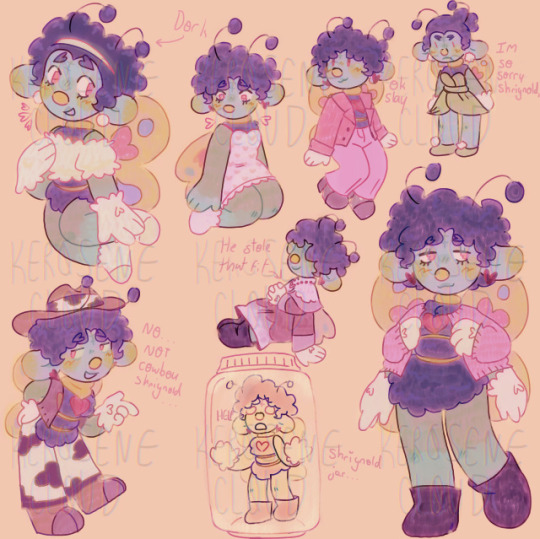


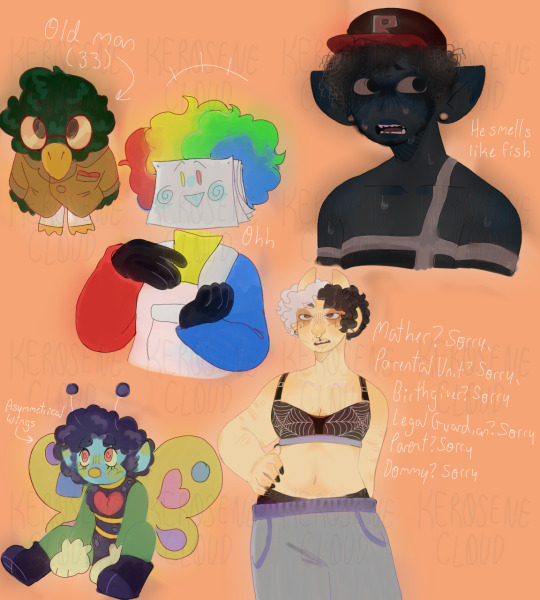


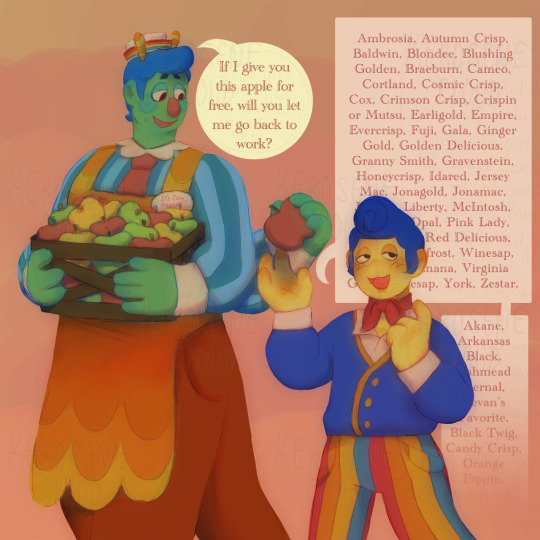
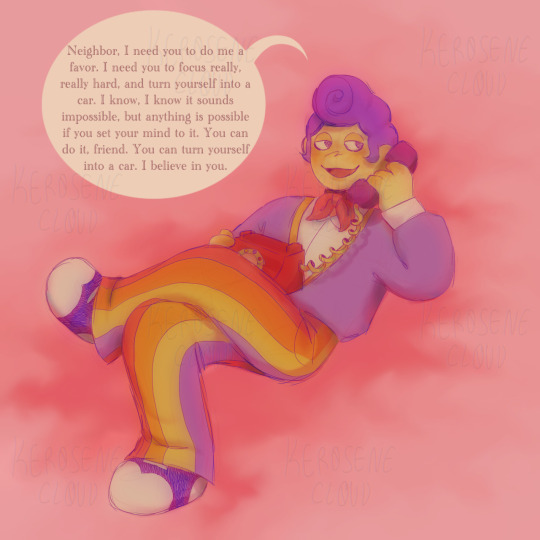
#my art#dhmis#dhmis fanart#dhmis lesley#dhmis yellow guy#yellow guy dhmis#lesley dhmis#lampnold#dhmis lovebird#dhmis shrignold#shrignold#shrignold dhmis#shrignold the butterfly#dhmis love cult#love cult#duck dhmis#zetozar#dhmis sketchbook#grey kadokawa#oc art#lars the lamp#lamp dhmis#dhmis lamp#welcome home#howdy pillar#wally darling#best#lovecore#100 notes
142 notes
·
View notes
Text
grey vs the cooler grey (alive & unwell)

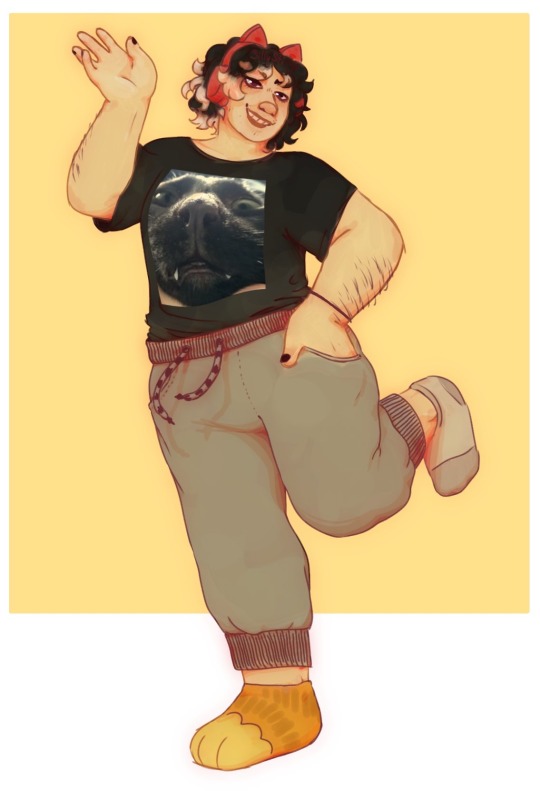
#controversial opinion: i like my ocs#🐝#my art#oc art#grey kadokawa#afterlyfe#artchive#< ig?#oc tag#flop era
11 notes
·
View notes
Text
and some oc stuff... for the people who like ocs!







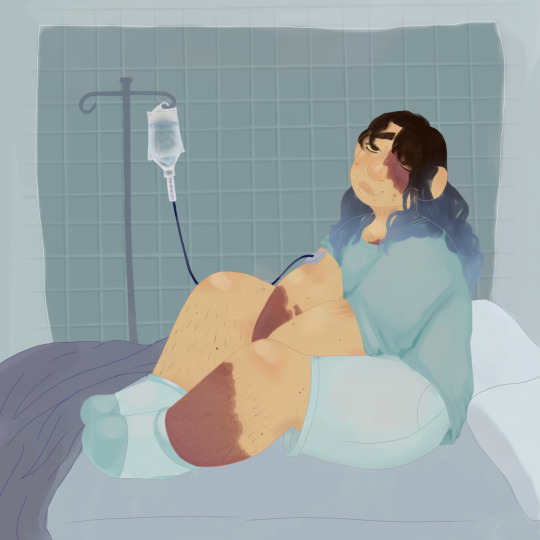

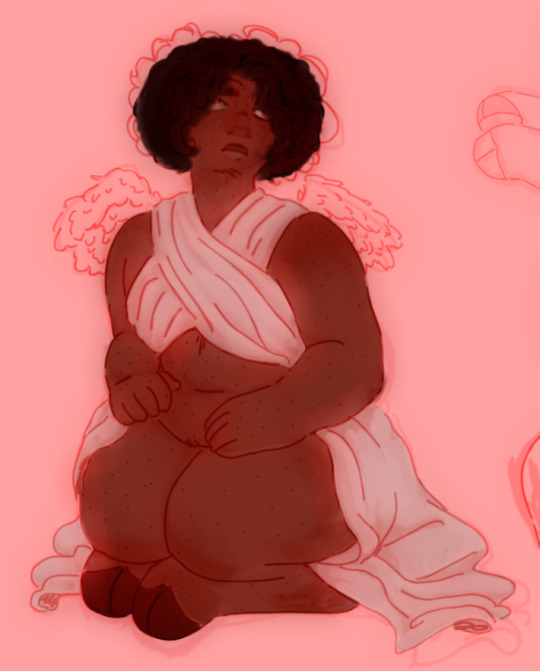
#my art#afterlyfe#oc tag#kimberly ferns#rosan nella#quinn koreba#grey kadokawa#thirteen walters#ashe kadokawa#prince petrov#bailey walters#coraline chen#beebs#charlie o'connor#julius walters#carmen rubera#sr carmen#dhmis oc#love cult#shrignold#insect 003#scopo cw#kero.png#kero 003#venus 004#helio 005#zombie#cw blood#angelkin#flop era
18 notes
·
View notes
Text
Manga the Week of 2/22/17
SEAN: Not only is next week a Yen Press week, but the other publishers have a bunch of stuff too. Get ready to be buried again.
J-Novel Club has three titles. Grimgar of Fantasy and Ash has a 2nd volume, and continues to be the “trapped in another world” title that is SERIOUS BUSINESS.
The debut this week is How a Realist Hero Rebuilt the Kingdom, which could be good but whose title makes me very wary. Realist Hero sounds only a few story steps from a Dark!Grey!Independent!Harry fanfic.
And we get the 2nd and (so far) final volume of Occultic;Nine, from the creators of other badly punctuated works.
Kodansha is doing a mass re-release of the Ghost in the Shell manga, featuring Ghost in the Shell 1, 1.5, and 2. No, it doesn’t have the hardcore lesbian sex scene, as I know someone will ask. The creator requested it be removed. It’s still good. Get it if you don’t have it.
ASH: It’s been a long time since I first read the original Ghost in the Shell manga! Along with Message to Adolf and Blade of the Immortal, it was actually one of the first manga that I ever read.
SEAN: And they have a 6th Inuyashiki as well.
Seven Seas has a quartet of titles, beginning with a second volume of Magia the Ninth.
ASH: The first volume of Magia the Ninth was absolutely ridiculous but I couldn’t help enjoy myself. I’ll definitely be picking up the second and final volume.
SEAN: There’s also a 6th volume of Magica Swordsman and Summoner, one of those titles that I sort of stick my fingers in my ears and go ‘lalala’ when I see it.
The debut is Magical Girl Site, another in a genre I am so sick of it’s beyond belief. If you like the 8th iteration of cute young girls dying in violent ways, here it is. Again.
And in the complete opposite direction, we have the 2nd volume of Miss Kobayashi’s Dragon Maid, which remains yuri-ish despite the best efforts of the English dubbers of the anime.
ASH: I was surprised by how much I enjoyed the first volume.
SEAN: Vertical has a 5th volume of Devil’s Line.
Viz gives us a 2nd Mobile Suit Gundam Thunderbolt, one of the newer Gundam iterations.
ANNA: I still need to read all the volumes of Gundam: The Origin that I hoarded.
ASH: I’m ashamed to say that there are a few volume of The Origin that I have left to read, too.
SEAN: And an 11th Tokyo Ghoul, which should outsell everything else on this list combined.
And there’s also a 7th Ultraman.
And then there’s Yen Press. As with previous months, we get most of their titles except one or two which are delayed a week (so don’t panic, Nozaki fans). Yen On has the 10th A Certain Magical Index. Will the entire world be forced to be Roman Catholic? Naruto never had cliffhangers like that.
Is It Wrong to Try to Pick Up Girls in a Dungeon? has the 2nd volume of its side story based on Aiz Wallenstein, Sword Oratoria.
Yen On’s debut is KonoSuba: God’s Blessings on This Wonderful World!, an abbreviation of Kono Subarashii Sekai ni Shukufuku o! (which I am happy to never type again). It’s a “trapped in another world” novel, but as you can see by its first volume subtitle, Oh My Useless Goddess!, it’s a broad parody of such titles.
And a 3rd volume of Psycome, in which the protagonist’s somewhat obsessed little sister joins the cast.
Oh yes, and three more Spice & Wolf volumes digitally, as the catchup really takes off.
Yen’s manga releases begin with the third Aoharu x Machinegun. Will we finally get the gender reveal that is probably long overdue?
ASH: Another series that surprised me with how much I enjoyed the first volume; I should probably catch up and see if I continue to like it.
SEAN: Onward and Onward and Onward goes BTOOOM!, now up to Vol. 16.
Corpse Party: Blood Covered has a 4th omnibus, and must be running out of corpses for the party. Someone will have to run down to the store.
MICHELLE: Hee! And that is the most amused I’ve ever been by Corpse Party!
SEAN: And we get a 5th Volume of Dimension W.
ASH: I’m still not sure if Iwahara can tell a coherent, cohesive story, but I did enjoy the first couple of volumes of Dimension W.
SEAN: Erased makes its debut, and it’s a hardcover omnibus. Dark time-travel thriller, from what I understand.
ASH: Now this I am very interested in reading.
SEAN: Fruits Basket has a 10th omnibus. We are rocketing towards the climax!
MICHELLE: After ten months, you’d think I’d be accustomed to the speed of this release, but you’d be wrong.
ANNA: Nice!
SEAN: KonoSuba, mentioned above, also has its 2nd manga volume.
Believe it or not, there are still Madoka Magica spinoffs, though they’re slowing down. Puella Magi Oriko Magica: Sadness Prayer’s 2nd volume sounds like the rest of the genre the main series inspired: bleak.
Rose Guns Days Season 2 Volume 2 is still not as good as Higurashi or Umineko.
I know very little about Smokin’ Parade except it runs in Kadokawa’s Young Ace and looks grim.
Spirit & Cat Ears is from my old nemesis, Comic Alive, so expect fanservice and cuteness, in that order.
Lastly, we get an eighth volume of Trinity Seven.
With the Manga Bookshelf team breathing a sigh of relief that at least there’s a Fruits Basket they can use for Pick of the Week, what will you be getting?
ANNA: Apparently, all of Kodansha’s josei and shoujo digital releases from last week!
By: Sean Gaffney
2 notes
·
View notes